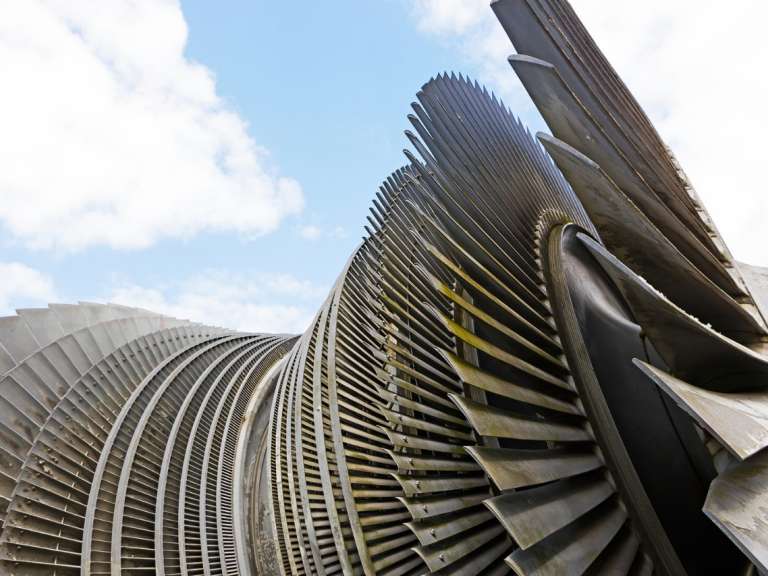Planning Effective Rotor Life Management: The Economic Factors
Jeremy BowdenSuccessful rotor life management requires strategic and proactive planning that takes into account potential market and legislative changes.

When operators begin planning rotor life management, they must address the risks associated with continued operation in order to ensure optimum plant performance. Components can wear out, causing loss of earnings or even catastrophic failure. By incorporating the right maintenance practices, the effects of aging can be reduced, just like proper maintenance can keep a car operational for hundreds of thousands of miles.
Eventually, however, difficult decisions have to be made about how to address aging rotors and other generating equipment. In deciding whether to maintain, change, upgrade, or replace rotors, asset managers must consider several factors. These include the long-term viability of the plant, the cost of downtime, and whether the plant operates as part of a larger fleet strategy. It may not be worth intervening if the plant is going to be retired in a few years, but if the future is rosy enough, then embarking on midlife rejuvenation or upgrades could be worthwhile.
To gauge viability, operators must assess how market developments may impact future profitability. For example, if an increase in low-cost renewable capacity is expected to cut the number of profitable hours a gas turbine plant can operate, then it may not be worth replacing equipment. On the other hand, if gas prices are expected to fall, then investing in improvements could be the right option.
Fatigue and Creep Life
There are two key aging risk factors that need to be considered with rotors: fatigue and creep. Fatigue life is dependent on the number of starts a plant undergoes, while creep life is linked to the number of hours a plant is operational. It is a best practice to provide defined limits for hours-based and starts-based operation for rotor life.
As rotors accumulate hours and starts, fatigue and creep life are consumed; as they rise in tandem, they interact and accelerate the wear of the rotor. This wear can manifest itself in a variety of ways, from increased vibrations to catastrophic failure. Both fatigue and creep force the power plant out of service, and the latter places people and plant equipment at risk.
Planning effective rotor life management requires an assessment of the amount of creep and fatigue life consumed before defined limits are reached, involving full disassembly and thorough inspection. During this service interval, some components may need to be replaced or repaired prior to reassembly.
To fully understand the creep and fatigue risks factors, the material certifications, design, operation data, and as-found inspections must be reviewed.
Adding Value
Effective rotor life management adds value primarily by minimizing downtime. Thus, preparation pays off. Managers shouldn't wait for the rotor life to be fully consumed before putting a strategy in place. Rather, they should proactively address rotor life management during a planned service interval. One routine option is to refurbish the existing rotor or to exchange it for a refurbished rotor. While the former is the cheaper option, it results in extended downtime.
Asset managers can also use the downtime to adapt and upgrade the plant. Inspection and disassembly intervals provide a chance to introduce more fuel-efficient equipment, which saves money, or to reconfigure equipment to increase potential revenue.
Known or anticipated market changes will often dictate how a plant is operated, and this may necessitate a change in setup. For example, if more efficient or lower-cost competing capacity is increasing, then plant operation may need to be adjusted downward from high hours-based operation to more of a starts-based, highly cyclic (peaking) operation.
Local or regional legislation may also dictate changes in the market dynamic. As such rules force the retirement of older, more polluting coal facilities, younger gas turbine plants may see demand on the rise, leading to a higher hours-based operation. Legislation may also set limits on emissions while maintaining output to satisfy dispatch requirements.
Future-proofing plant operations against anticipated market and legislative changes will dictate the additional needs that drive plant/fleet value. The service interval creates a natural opportunity to execute upgrades that cut costs or improve revenue generation, operability, output, and emissions.
Expensive Downtime
In planning rotor life management, most upgrades or repairs are designed to be made on-site to minimize downtime and disruption, with a few exceptions that require more lengthy and expensive treatment in a service facility. On these occasions, every effort should be made to upgrade the rotor based on lessons from historical repairs and with the latest adaptations to market conditions.
This could be as simple as going from an unflared to a flared rotor design, where the only parts that change are some compressor blades. It could also be as complex as adopting advanced compressor options, where the entire rotor and aero-structure is radically different. Even in the field, such changes can lead to extended outage periods, and the full cost of replacement or upgrade needs to be weighed against anticipated plant revenue.
To be in the best place, plant managers need to lay out a plan for the future of their plants at the earliest practical time. Only by selecting the right asset management strategy will it be possible to get the best value from a plant as it progresses through its life.
Improving flexibility and efficiency at low loads can enhance steam plant profits, along with lowering maintenance costs.
With increasing penetration of intermittent renewable energy sources, owners and operators of fossil generation assets must anticipate a wider range of missions.
When power plants get old, owners can opt to tear them down and rebuild. But a faster option is turbine replacement, which offers improved performance at a fraction of the cost of a complete renewal.